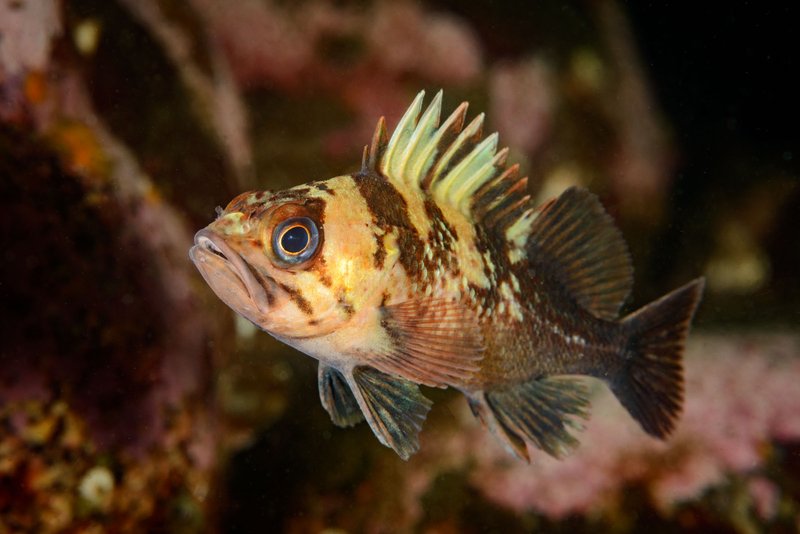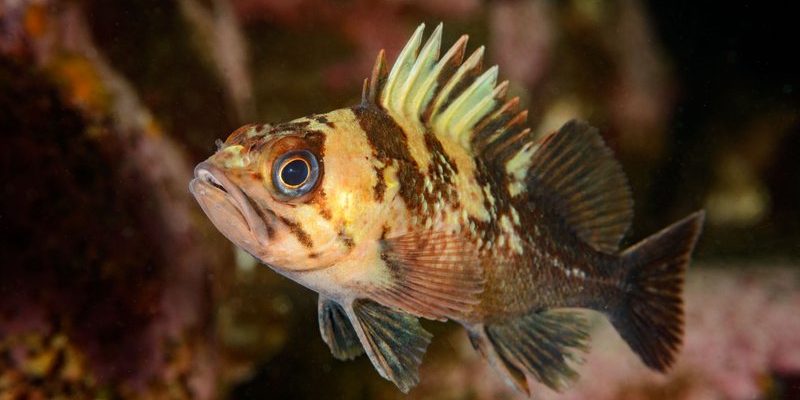
When you think of the ocean, you might envision vibrant coral reefs or majestic whales gliding through the water. But beneath the surface, there’s a whole world of fascinating creatures—one of them being the rockfish. These colorful fish, belonging to the genus Sebastes, are known for their striking patterns and adaptability in various ocean environments. With over 100 different species, rockfish are a captivating blend of beauty and resilience.
You might be wondering what makes rockfish stand out from other fish. For starters, their unique shapes and vibrant colors draw the attention of both underwater explorers and fishermen alike. They’re not just pretty faces; these fish play a significant role in marine ecosystems. Rockfish thrive in rocky habitats, where they use their excellent camouflage skills to stay hidden from predators. They’ve found their niche along the rocky coastlines of the Pacific Ocean, showcasing an impressive range of colors—from deep reds to mottled browns.
Rockfish Characteristics
Rockfish are fascinating in their diversity. They can vary greatly not just in coloration but also in size and lifespan. Some species are comparatively small, measuring around 12 inches long, while others can grow to an impressive 36 inches or more! Their bodies are usually elongated, with spiny fins that add to their distinctive look. This combination of size and unique features makes rockfish particularly interesting to marine biologists and fish enthusiasts alike.
One remarkable trait of rockfish is their longevity. Some species can live for over 100 years, which is quite impressive compared to many other fish. This longevity is a double-edged sword: while it allows them to thrive, it also means that they reproduce less frequently. As a result, conservation efforts are essential to ensure that rockfish populations remain stable.
Habitat and Distribution
Rockfish primarily inhabit the waters of the North Pacific, from the shallow coastal areas of Alaska down to the waters off California and even into parts of the Sea of Japan. They prefer environments that provide plenty of structure and shelter, such as rocky reefs, kelp forests, and undersea cliffs. These habitats offer protection from predators while providing ample food sources.
Within these varied environments, rockfish exhibit remarkable adaptability. They can thrive in depths ranging from 30 to over 600 feet. For instance, some species like the Pacific rockfish prefer shallower waters, while others, such as the rougheye rockfish, prefer deeper regions. This adaptability not only helps them avoid threats but also enables them to exploit various food resources in the ocean, from small fish to crustaceans.
Diet and Feeding Habits
Rockfish are carnivorous, primarily feeding on smaller fish, squid, and crustaceans. Their diet can vary based on their age and habitat. Younger rockfish often consume smaller, more abundant prey like zooplankton, while adults tend to go after larger fish or invertebrates. Their keen eyesight helps them spot prey even in dimly lit waters.
To catch their food, rockfish rely on a combination of stealth and speed. They often use their camouflage to blend in with their surroundings, enabling them to ambush unsuspecting prey. Once a target is spotted, they can move quickly, thanks to their powerful bodies. This hunting strategy is an essential part of their survival.
Reproduction and Lifespan
Rockfish have a fascinating reproductive strategy. Most species of rockfish are viviparous, which means they give birth to live young rather than laying eggs. This adaptation allows the fry to have a better chance of survival since they start life in a more developed state. The breeding season varies by species, but it generally occurs in late spring to early summer.
The gestation period can last anywhere from 4 to 6 months. After this time, female rockfish can give birth to hundreds of larvae, which are then released into the open water. These young fish are highly vulnerable and drift with the currents before finding suitable habitats to settle. Interestingly, rockfish can live for a very long time—many species can reach ages exceeding 50 years, with some reported to live for over a century.
Conservation Status
Rockfish are facing several threats, primarily due to overfishing and habitat degradation. Many species are caught as bycatch or targeted by commercial fisheries, leading to significant population declines. Conservation efforts are critical to protect these unique fish and their habitats. Various organizations are working to promote sustainable fishing practices and restore damaged marine environments.
In recent years, some rockfish species have been placed on the endangered species list, highlighting the need for urgent action. Marine protected areas (MPAs) have been established in some regions to safeguard their habitats and ensure their survival for future generations. By supporting sustainable fishing practices and conservation initiatives, you play a part in helping these amazing creatures thrive.
Interesting Facts about Rockfish
| Common Name | Rockfish |
| Scientific Name | Sebastes spp. |
| Habitat | Rocky reefs, kelp forests, deep waters |
| Diet | Small fish, squid, crustaceans |
| Size | 12 to 36 inches |
| Lifespan | Up to 100 years |
Rockfish are more than just colorful denizens of the sea. They are complex, resilient creatures that contribute significantly to the marine ecosystem. Understanding their characteristics, habitat, and the challenges they face helps us appreciate and protect these fascinating fish. Whether you encounter them while diving, fishing, or simply learning about marine life, rockfish are a reminder of the wonders beneath the ocean’s surface.
FAQ
What do rockfish eat?
Rockfish primarily feast on smaller fish, squid, and crustaceans. Their diet varies with age and habitat; younger rockfish often go for smaller prey like zooplankton, while adults target larger fish and invertebrates. Their excellent eyesight and stealth make them effective hunters in their rocky homes, allowing them to ambush unsuspecting meals.
How long do rockfish live?
Many rockfish species can live for quite a long time, with some reaching ages of 50 years or more. Notably, certain species, like the rougheye rockfish, can live to be over 100 years old! Their long lifespan is fascinating, but it also means that they reproduce less frequently, making them more vulnerable to overfishing and environmental changes.
Are rockfish good to eat?
Yes, rockfish are known for their mild flavor and flaky texture, making them a popular choice for seafood enthusiasts. They’re often featured in various cuisines, from fish tacos to grilled fillets. However, it’s essential to pay attention to sustainability when purchasing rockfish, as some species are overfished. Always check for sustainability ratings or ask local fishmongers for guidance.
Where can I find rockfish?
Rockfish are primarily found along the Pacific Coast of North America, ranging from Alaska to California. They prefer rocky habitats, kelp forests, and undersea cliffs, where they can hide from predators. If you’re looking to catch rockfish, coastal areas and fishing charters in these regions often provide good opportunities.
What are the main threats to rockfish?
Rockfish face several threats, mainly due to overfishing and habitat degradation. They are often caught as bycatch in commercial fisheries, which can significantly impact their populations. Additionally, climate change and pollution pose risks to their habitats, further emphasizing the need for conservation efforts to protect these incredible fish.
Do rockfish have any natural predators?
Yes, rockfish have several natural predators, including larger fish species, seabirds, and marine mammals. Their ability to camouflage against rocky backgrounds helps them evade many predators, but larger fish like sharks and even humans have been known to prey on them.
Can rockfish change color?
While rockfish cannot change color like some other species, they do exhibit a range of vibrant colors and patterns that can help them blend into their surroundings. This natural camouflage can vary from species to species and is crucial for their survival in the wild.
Are all rockfish species similar?
No, there is quite a diversity among rockfish species. They can vary significantly in size, coloration, and habitat preference. Some may prefer deeper waters, while others thrive in shallower coastal regions. Each species has its unique adaptations that help it survive in specific environments, contributing to the rich tapestry of marine biodiversity.
How do rockfish reproduce?
Most rockfish species are viviparous, meaning they give birth to live young instead of laying eggs. The gestation period can last between 4 to 6 months, during which the female nurtures her developing fry. Once the young are born, they drift into the open water to start their lives, facing numerous challenges in their early stages.
What role do rockfish play in the ecosystem?
Rockfish serve as both predator and prey within their ecosystems. They help regulate populations of smaller fish and invertebrates, maintaining a balance in marine habitats. Additionally, they serve as an essential food source for larger predatory species, seabirds, and marine mammals, making them a vital part of the oceanic food web.
How can I help conserve rockfish?
You can help conserve rockfish by supporting sustainable seafood practices, advocating for marine protected areas, and participating in local conservation efforts. Choosing to eat sustainably sourced fish can also make a significant difference. Additionally, educating others about the importance of rockfish and their ecosystems is a great way to raise awareness and promote their protection.

